


![]() Why is diffraction so important?
Why is diffraction so important?
![]()
![]()
How good is your eyesight?
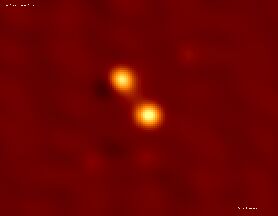
An image of Capella taken with the COAST telescope. The two stars are seperated by about 50 milliarcsecond. Copyright MROA 1996.
To the naked eye all stars apart from the sun appear as points of light. Is this because our eyes are not as good as they could be from looking at too many web pages?
The angular resolution of the eye, or how well we can separate images, is ultimately limited by the size of the diffraction pattern produced by the eye's optics. By calculating how the light waves propagate through the optics it can be shown that large optics produces a smaller diffraction pattern. Since the angular size of a star is very small, because they are so far away, and the pupil in your eye is small, the diffraction pattern of the eye's optics will be much larger than the image of the star. Therefore all the stars you see will appear to be the same size, which is the same as saying all stars appear as points of light. So you can carry on surfing without worrying.
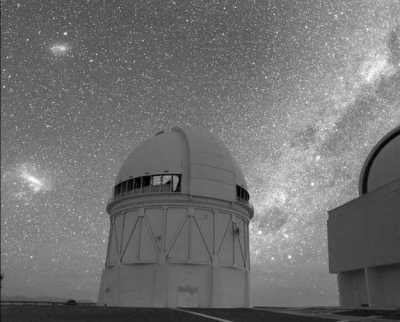
Every star apart from the Sun appear as point sources.
![]()
Could we do any better with a telescope?
The answer must be yes, since all telescopes will have larger collecting areas than your eye, therefore the diffraction pattern will be much smaller. So a well-designed telescope will always be able to resolve objects closer together than the naked eye.
Diffraction also limits the angular resolution of XMM. Taking into account the support structure for the very thin mirror shells XMM will be able to resolve objects separated by 15 arcseconds.
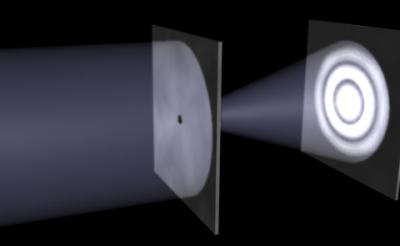
The diffraction pattern from a single, small circular aperture is identical to the diffraction pattern of a star (or point source)
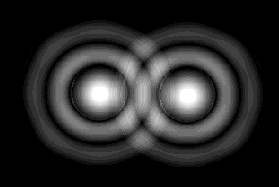
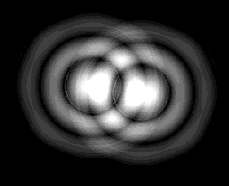

The three pictures above represent the diffraction pattern of two point sources. In the top picture, it is possible to distinguish between the two point sources. The remaining two pictures show when there is two much overlap for the two point sources to be distinguished.
![]()
What additional Information can we obtain from the X-rays collected by XMM?
An image of a star only yields a small amount of information about the star. Much more information can be gleaned if the wavelengths of received light are spread out to form a spectrum. Even with a relatively course spectrum the blackbody spectrum can be observed. This can give an estimate of the temperature of the emitting object. Early astronomers where able to use the eye's colour sensitivity to estimate the temperatures of stars; for example the cool star Betelgeuse, appear redder than the nearby hot star Rigel. If a spectrograph is used to separate the wavelengths of light
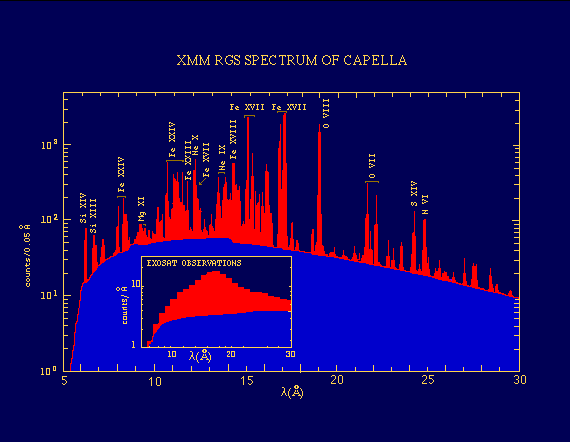
Image - XMM RGS Spectrum of Capella
Please click for pop up image
![]()
How do you create an X-ray Spectrum?
The X-ray CCD cameras on XMM used for imaging can also distinguish the energy of incoming X-ray photons. The spectral resolution of a CCD is only moderate and does not reveal the full complexity of many X-ray spectra. Therefore, XMM carries a different type of spectrometer, with much higher spectral resolution, so-called "Reflection Grating Spectrometer" (RGS)
One important property of diffraction that is extremely useful for producing a spectrum is that the diffraction pattern produced by an aperture will change with the wavelength of light illuminating it. To make a diffraction pattern extremely sensitive to wavelength, and therefore be able to spread the wavelengths of light out a lot, a large number of equally spaced apertures are used in a device known as a diffraction grating. The RGS instrument uses the wavelength dependence of a diffraction grating to spread out the received X-ray radiation so that a spectrum is formed on the X-ray detectors.
![]()
How can I understand the formation of a diffraction pattern?

